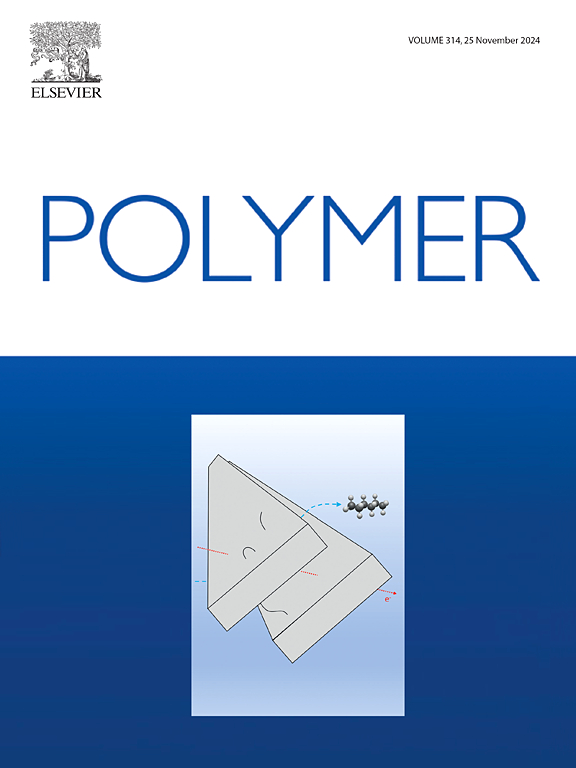Effect of chain length of α,ω-aliphatic diacid on melt crystallization and optical, mechanical and gas barrier properties of aliphatic-aromatic PBXT copolyesters
IF 4.1
2区 化学
Q2 POLYMER SCIENCE
引用次数: 0
Abstract
Two series of high molecular weight aliphatic-aromatic random copolyesters: PBXT, where X represents the carbon atom number of the aliphatic α,ω-diacids, PBXT48 and PBXT50w (X = 4–14, even), with molar and mass copolymer compositions (48 mol% and 50 wt%) equal to those of commercial poly(butylene adipate-co-terephthalate) (PBAT) were synthesized from butanediol, terephthalic acid and various aliphatic α,ω-diacids. They were characterized with 1H NMR, and their melt crystallization, optical, mechanical and gas barrier properties were assessed. In these copolyesters, the melt crystallization of butylene terephthalate (BT) sequence is dominant, while the butylene adipate (BX) sequences can also crystallize from melt when the BX content is high enough, the chain length of α,ω-diacid unit or the crystallization time is long enough. Long enough chain length of α,ω-diacid unit (X ≥ 6) endows PBXT with sufficient chain flexibility/mobility and, therefore, excellent melt crystallizability at rapid cooling. For PBXTs with X ≥ 6, the effect of X on BT crystallization is not monotonic. In particular, both PB6T and PB12T displayed a higher melt crystallization temperature than the adjacent PBXTs. Compared to PB6T, PB4T has higher transparency and gas barrier properties; with increasing X from 6 to 14, the PBXTs show increased transparency and water vapor barrier, but decreased oxygen barrier performance. The tensile modulus and strength of PBXT decrease, and the elongation at break increases with increasing X. But the effect of X is clearly weakened for PBXTs with the same mass composition of 50 wt%.


求助全文
约1分钟内获得全文
求助全文
来源期刊

Polymer
化学-高分子科学
CiteScore
7.90
自引率
8.70%
发文量
959
审稿时长
32 days
期刊介绍:
Polymer is an interdisciplinary journal dedicated to publishing innovative and significant advances in Polymer Physics, Chemistry and Technology. We welcome submissions on polymer hybrids, nanocomposites, characterisation and self-assembly. Polymer also publishes work on the technological application of polymers in energy and optoelectronics.
The main scope is covered but not limited to the following core areas:
Polymer Materials
Nanocomposites and hybrid nanomaterials
Polymer blends, films, fibres, networks and porous materials
Physical Characterization
Characterisation, modelling and simulation* of molecular and materials properties in bulk, solution, and thin films
Polymer Engineering
Advanced multiscale processing methods
Polymer Synthesis, Modification and Self-assembly
Including designer polymer architectures, mechanisms and kinetics, and supramolecular polymerization
Technological Applications
Polymers for energy generation and storage
Polymer membranes for separation technology
Polymers for opto- and microelectronics.
 求助内容:
求助内容: 应助结果提醒方式:
应助结果提醒方式:


